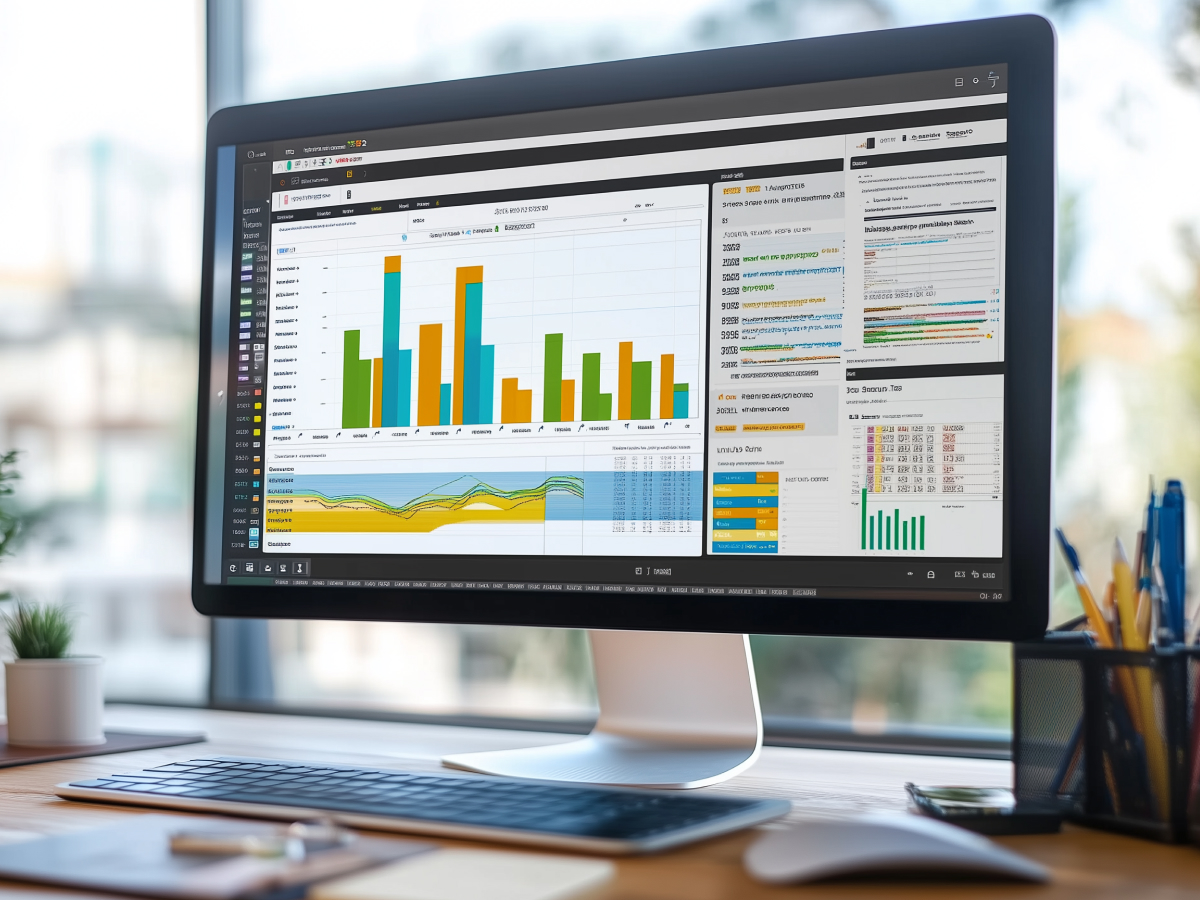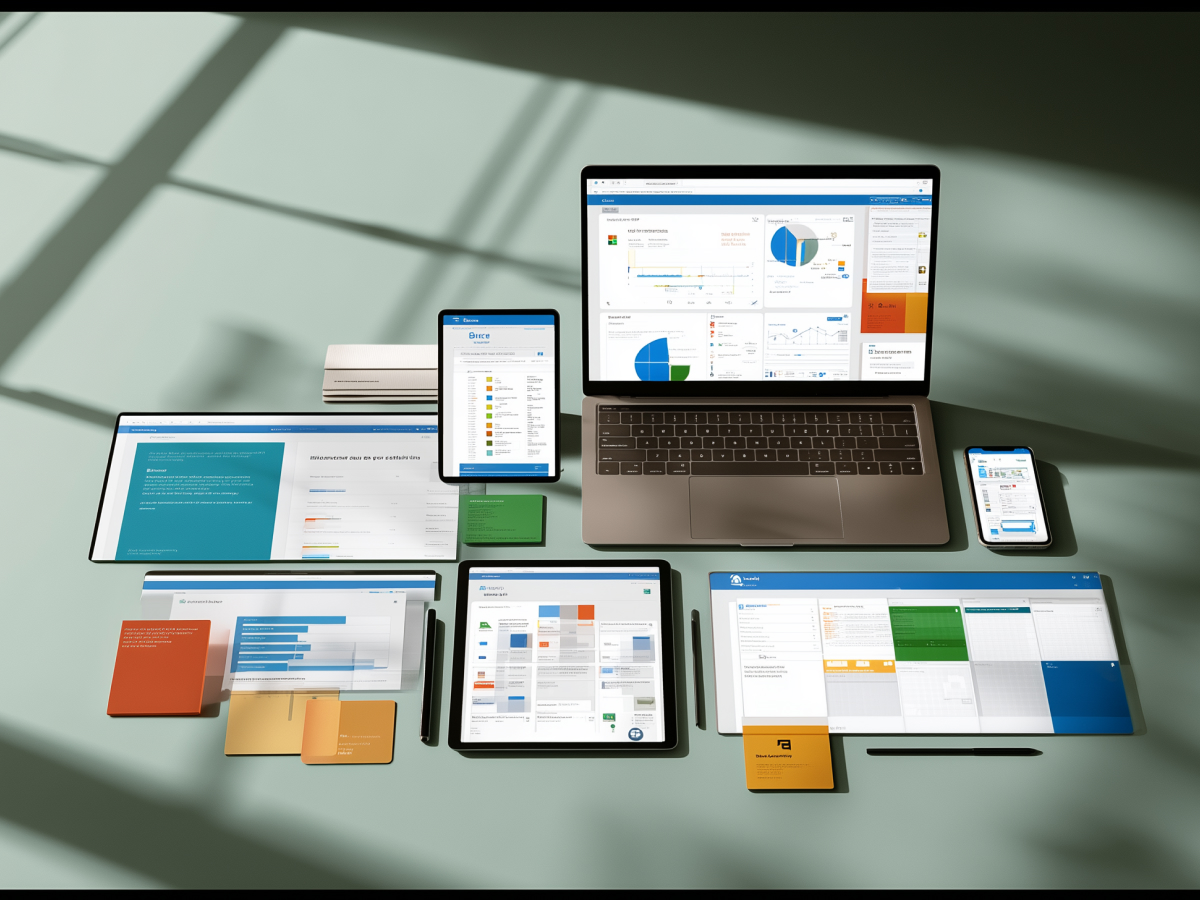ERP customers are enthusiastic about AI but want evidence of its value
Let’s be honest, AI is everywhere. But that doesn’t mean customers will buy into it without proof it delivers. Business leaders are open to AI-enabled ERP capabilities, but they’re not rushing in blind. They want results. Automated workflows, reduced manual tasks, improved speed, if AI can deliver that in real operational settings, then we’re talking. Until then, most executives are taking a wait-and-see approach.
The rise in adoption is real. According to Panorama Consulting Group, organizations reporting significant or moderate deployment of AI technologies jumped from 53.4% to 72.6% since early 2024. That’s fast growth, but it’s not the whole story. These figures reflect experimentation and exploration more than conviction. What customers actually want is visible, repeatable value. No gimmicks. No vague AI promises. They need to see AI reduce costs, improve invoicing accuracy, cut down lead times, things that show up clearly in the P&L.
For C-suite decision-makers, this means pressing your ERP partners for proof of value. You’re not buying a feature; you’re buying results. If your ERP provider’s AI pitch sounds like a roadmap scribble from an R&D basement, don’t bite. If they can show how AI tangibly streamlined functions like finance automation or order management, it might be time to lean in.
Chris Devault, Senior Manager of Client Services at Panorama Consulting, put it well: stakeholders are interested in “what the capabilities are and what the AI vision is.” That’s the right mindset. But vision has to be supported by working solutions, today, not tomorrow.
ERP customers demand strategic alignment and transparency
You can’t bluff your way through an AI strategy. Enterprise buyers are asking real questions, fast. Vendors must do more than name-drop AI trends, they need to show where investment is going, what gets automated, how it connects to core workflows. Executives don’t want hype. They want to see the structure behind the pitch: research, engineering, and integration with existing systems.
ERP customers are signaling a shift. They’re asking not just how AI works technically, but how it fits into their business processes. The interest is clear in areas like finance, where repetitive tasks provide a lower barrier to implementation. Vendors talking about automating ledger entries or expense processing are getting attention. But in manufacturing and supply chain? Clarity there is still evolving. Leaders want to fully understand how AI will move beyond siloed tools and improve system-level performance across ERP layers.
Buyers expect transparency, from R&D to roadmaps. According to Chris Devault, it’s not just about having “investment there” or some lightweight rollout. It’s about knowing there’s planning and a structure to make AI a natural part of future ERP operations. Without that visibility, adoption will stall.
For executives, here’s the takeaway: don’t wait for vendors to explain it their way. Ask precisely how AI will reduce processing time, enhance forecasting, or support real-time decision-making. Push for alignment between their AI roadmap and your real-world challenges. If they can’t show that, you’re better off holding back until they can. This is not about tech for tech’s sake, this is about using AI to make businesses faster, smarter, and more resilient.
AI is beginning to influence ERP software selection
Right now, AI isn’t the main reason companies choose an ERP system. It’s an add-on, not the foundation. ERP buyers still focus on the fundamentals, system stability, scalability, total cost of ownership, vendor support. If a platform includes AI perks, great. But these features aren’t tipping the scale, yet.
What we’re seeing is AI gaining ground in pre-sale functions, particularly in digital discovery. Vendors are starting to use AI during the selection and configuration process itself. That includes identifying which components to activate, recognizing dependencies (like workflow implications for purchase orders), and analyzing needed customizations. These tools can reduce the time and complexity of implementation, and enterprise buyers appreciate that, especially those who have gone through costly ERP rollouts in the past.
But make no mistake, this utility isn’t enough to drive a deal. As Chris Devault of Panorama Consulting Group points out, “customers want to understand AI capabilities in ERP, but they’re not necessarily making it a major component in the selection process.” He’s right. AI, at this stage, is more of a value boost than a decision driver.
If you’re in the C-suite, here’s the move: recognize AI’s emerging influence, but don’t let it distract you from measuring an ERP system’s overall business fit. Ask vendors how AI enhances core ERP functions, not just the setup phase. If they can’t articulate how it improves uptime, accuracy, reporting cycles, or data entry automation, then the AI talk is premature.
Customers require applied, outcome-driven AI solutions
Executives aren’t asking for AI just because it’s popular, they need it to solve real problems. This is where vendors get tested. Installing a chatbot isn’t innovation. Automating contract-specific invoicing protocols and eliminating manual bottlenecks in accounts receivable? That gets attention.
Shawn Windle, Founder and Managing Principal at ERP Advisors Group, shared an example that’s telling. A multibillion-dollar oilfield services company running an older version of SAP wouldn’t move forward on AI integration unless it could directly improve a key operational task, daily ticketing and invoicing. Five people were manually reviewing each invoice to avoid contractual errors. Even with all that oversight, sales suffered when mistakes slipped through. That’s not sustainable for any enterprise. That’s what AI is supposed to fix.
Enterprise leaders want outcome-driven AI. They aren’t looking for broad, unfocused platforms, they want tools that understand the business logic, apply it at scale, and deliver results. They’re asking if AI will eliminate redundant reviews, speed up billing cycles, or correct workflows that cause revenue leaks.
If you’re leading a business, focus on function. Make sure your ERP vendor can map the AI capability back to your unique business processes. Don’t approve adoption unless the feature addresses a measurable inefficiency or improves throughput. If the vendor delivers working AI that streamlines proven use cases, that’s when your ROI conversation gains traction. Everything else is noise.
AI-driven ERP tools are becoming increasingly accessible
AI is no longer reserved for enterprises with seven-figure tech budgets. Small and medium-sized businesses are getting access to the same capabilities, automation, predictive analytics, real-time reporting, without needing to architect everything from scratch. It’s because ERP vendors are embedding AI into core offerings, lowering cost barriers and minimizing complexity.
Robotic Process Automation (RPA) and machine learning were once sold as high-level tools for large-scale operations. That’s changed. Vendors are now packaging these technologies into out-of-the-box ERP features. SMBs can onboard AI as part of their standard ERP deployment, without hiring a team of data scientists. According to Shawn Windle from ERP Advisors Group, what used to be viewed as high-end tech, something like UiPath, is now expected as standard in modern ERP systems, even for smaller operations.
This shift is important. For SMB executives, you’re no longer choosing between cost and capability. Now you get both. If your ERP vendor can’t show how their AI components improve operational outcomes at your company’s scale, they’re behind. Implementation needs to be fast, upgrades predictable, and ROI measurable.
And while full-scale agent-based AI is still in development for most SMBs, the early-stage tools, automated data entry, intelligent invoice validation, AI-assisted reporting, are already delivering value. They improve accuracy, reduce manual work, and make your system more intelligent with every use. If you’re not evaluating those features in your next ERP rollout, you’re leaving efficiency on the table.
Migration from legacy ERP systems to cloud-based platforms
Enterprise buyers staying on legacy on-prem systems are beginning to pay the price. AI doesn’t scale efficiently in traditional ERP environments. The infrastructure wasn’t built for dynamic learning models or real-time automation. Businesses stuck on old systems are starting to accept that moving to the cloud isn’t a preference, it’s a requirement if they want to capitalize on emerging AI capabilities.
Shawn Windle highlighted this shift, pointing out that major ERP vendors have large customer bases still running on-prem. But those customers are now seeing cloud migration as the gateway to AI integration. Legacy architectures limit not just performance but the ability to connect with AI features that are being rolled out progressively on cloud-first ecosystems.
For leadership teams, the message is direct: cloud isn’t just about flexibility, it’s about unlocking intelligence. Access to next-generation ERP capabilities, predictive analytics, automated process adjustments, adaptive scheduling, requires scale, speed, and integration that on-prem systems can’t deliver affordably at this point.
If your organization is still debating the cloud transition, factor in the opportunity cost. While others use cloud-based AI to outpace competition, you’ll be stuck trying to force innovation into an outdated framework. The longer the delay, the greater the gap between companies moving ahead and those holding back. Now’s the time to move, but move with a clear plan. Prioritize systems that are built for continuous AI expansion, not bolt-on features with unclear long-term support.
ERP AI adoption will focus on automating routine tasks
Organizations aren’t starting with deep AI complexity. They’re focusing on clear, repetitive processes. It’s smart. Early-stage adoption centers on automating manual tasks, things like invoice processing or approvals. That’s where the fastest efficiency gains come from without needing extensive restructuring.
Claus Jepsen, Chief Product and Technology Officer at Unit4, stated that ERP AI uptake is beginning with “low-hanging fruit”—point-in-time use cases with small data sets. This phase allows businesses to see immediate returns before scaling. Jepsen also highlighted that upcoming phases will integrate machine learning and large language models into ERP datasets, enabling users to move from task automation toward advanced analytics and user-driven business insights.
As that happens, the role of AI changes. It will shift from simple logic automation to becoming an intelligence layer over enterprise workflows. AI won’t just process. It will inform, predict, and support decisions, using operational data at scale.
Business leaders should plan ERP strategies in stages. Approve automation where results are immediate. Then prepare systems, people, and processes for tighter AI integration over time. Avoid expecting full transformation at step one, leverage the early phases to build momentum and investment confidence.
ERP customers are focused on functional AI implementations
Customers are clear: AI must deliver visible operational improvements. Flashy interfaces don’t matter if they don’t impact performance. AI that simply adds a layer of interaction, like a chatbot, won’t meet expectations on its own. Leaders want results: faster planning, more accurate forecasting, better resource use.
Robert Rostamizadeh, Chief Technology Officer at Rootstock, made the point directly. Customers “are looking to us as ERP experts to show how they should leverage AI.” They’re not interested in technology that hides behind a sleek UI. They expect it to drive tangible benefits like improved manufacturing planning, predictive lead times, and better use of data across the supply chain.
Rootstock’s advantage comes from being built on Salesforce’s platform, enabling it to tap into Agentforce AI capabilities. This includes predictive and generative AI functions that allow businesses to interact dynamically with their material requirements planning (MRP) systems, asking direct questions and modeling operational scenarios in real time. That’s what the market wants, AI that brings intelligence to planning, not just another interface.
For boards and C-suite executives, the priority is clear: demand AI features that measurably improve output and performance. If a vendor promotes an AI capability, challenge them on what business function it enhances, what KPIs it impacts, and how it’s secured and supported across your ERP stack. If it’s functional, fund it. If it’s superficial, move on.
In conclusion
AI in ERP isn’t about checking a box, it’s about solving real business problems faster, better, and more efficiently. The hype means nothing if it doesn’t translate into real value across finance, operations, and supply chain execution. That’s what leadership teams care about, and rightly so.
Executives should expect more from ERP vendors, clear product roadmaps, strong use cases, and results tied to business outcomes. Don’t get distracted by surface-level features. Focus on AI that cuts process time, improves accuracy, eliminates waste, and supports smarter decisions.
The shift underway is real. AI is moving from test phase to core functionality. But smart adoption starts with asking the right questions, holding partners accountable, and making sure every feature ties back to measurable gains. Business moves fast. Your ERP, and its AI, has to keep up.





